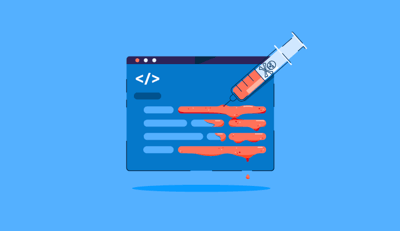February 24, 2025
 by Sagar Joshi / February 24, 2025
by Sagar Joshi / February 24, 2025

The scalability and innovation the Google Cloud platform (GCP) offers remain unmatched. As an IT security analyst or cloud engineer, what worries you is GCP security.
Issues like improper access settings, unpatched systems, and security vulnerabilities can expose sensitive data to unauthorized access. Soon, you realize managing Google Cloud security responsibilities is hard, regardless of whether you choose SaaS, PaaS, or IaaS as the cloud service model.
Let’s explore some essential strategies and best practicesto strengthen your GCP security posture and safeguard your organization's data.
GCP security refers to the processes, measures, technologies, and standards that helps secure data assets on Google’s cloud infrastructure service.
GCP cloud security is a shared responsibility of Google Cloud and customers like you. While Google Cloud secures the infrastructure, it is your responsibility to secure applications running on the platform.
GCP is a platform-as-a-service cloud vendor offering computing, storage, and networking resources on a free or pay-per-use basis. Below are some of their popular free-tier products:
GCP uses zero trust architecture that integrates multiple security layers. Here’s how it protects data and infrastructure:
Google Cloud Platform security is vital for protecting sensitive data, mitigating security threats, and ensuring service availability.
Did you know that 69% of all data breaches occur because of multi-cloud security misconfigurations? Focusing on GCP security helps you protect data with encryption keys and prevent malicious leaks with data loss prevention API. Google Cloud also employs AES-256 encryption and hardware-based trusted execution environments (TEEs) to encrypt and protect data.
GCP security measures help you mitigate distributed denial of service (DDOS) attacks that continue rising yearly. To safeguard you from high-volume attacks, Google Cloud offers tools like Cloud Armor that use layer 7 DDoS mitigation. Monitor GCP’s security command center to track asset security status and prioritize actionable risks in real time.
GCP security is also essential for ensuring high availability during unexpected spikes, hardware failures, or security incidents. Google Cloud ensures data availability by using multi-regional data replication to store data copies in multiple data centers and auto-scaling to handle outages.
Moreover, the platform prevents downtime by letting Compute Engine Live Migration move virtual machines between hosts.
Once you understand why GCP security is critical, it’s important to know your role in maintaining it!
Shared responsibility in GCP refers to Google's responsibility for its cloud network and infrastructure and customers' responsibility for access policies, securing their data, and configuring workloads.
Depending on your GCP deployment, you may be responsible for:
Knowing your shared responsibilities is important because each service has unique configuration options. Unless you’re fully aware of what you’re responsible for, you won’t be able to achieve better security outcomes.
Source: Google Cloud
Your GCP security responsibilities depend on your workload type and cloud services. Here’s the breakdown:
GCP also emphasizes the shared fate model of cloud computing, which refers to customers using Google Cloud's attested infrastructure code and immutable controls to secure workloads. Shared fate means GCP closely interacts with customers to help them solve complex security problems with innovative solutions.
Customers must consider the following shared responsibility challenges while implementing GCP security methods.
Misconfiguration is one of the main reasons behind unintended data exposure and cloud security breaches. For example, assigning broad roles like "owner" instead of restrictive roles exposes sensitive data to unauthorized access. Similarly, cloud storage buckets without proper authentication and strict access controls can expose data.
Businesses using multiple cloud services often struggle with managing service-specific security controls. For example, a company using Google Compute Engine, Google Workspace, and BigQuery must understand how data flows among these services. Without it, the organization won’t be able to define security perimeters, standardize encryption methods, or spot potential misconfigurations.
The line between your incident management responsibilities and those of GCP can be blurry. That’s why it’s important to collaborate with Google Cloud to investigate incidents thoroughly.
Consider using security information and event management (SIEM) tools to detect threats and deploy security policies across environments.
Neglecting security patches exposes containerized applications to vulnerabilities. Plus, deploying container images without scanning can introduce malware, especially if they are from untrusted repositories.
GCP users must scan images, adopt automated vulnerability scanning tools in the CI/CD pipeline, and apply security patches to secure containerized environments.
Compliance is another challenge for companies using GCP cloud environments. They may encounter different requirements when they enter new markets. Organizations acquiring new businesses may also notice that their acquisition hosts workloads on a different cloud. Conducting risk profile assessments and implementing new controls is crucial in these cases.
Hackers use different methods to gain unauthorized access to your Google Cloud environment:
GCP offers a variety of Google Cloud security tools for identity and access management, threat detection, data protection, and compliance. Some of these are:
Testing Google Cloud Platform security helps you understand whether your applications follow appropriate security measures. Let’s explore some of the approaches you can use:
Source: G2
Black box testing assesses an application’s functionality without prior knowledge of systems or their internal structures. On the same lines, GCP black box testing evaluates your Google Cloud applications’ security and functionality without knowing their codebases or internal configurations. The goal remains to find potential weaknesses in publicly accessible interfaces, endpoints, and APIs.
White box pen testing or structural testing involves examining an application’s internal structure for threats and flaws. The tester will have complete knowledge of your GCP applications’ internal logic, design, source code, configurations, and architecture.
Ultimately, you’ll find insecure coding and misconfigurations that may cause runtime errors or security vulnerabilities.
Gray box pen testing combines both black box and white box testing methods. Pen testers have partial knowledge of your GCP applications and services. They explore applications from an external attacker’s perspective to target and test specific functionalities, integration points, and potential vulnerabilities.
|
Black box testing |
White box testing |
Gray box testing |
|
|
GCP security use cases |
Evaluating public-facing APIs, cloud storage bucket permissions, and network configurations. |
Reviewing IAM roles, Cloud KMS encryption configurations, and Compute Engine application code. |
Testing integration of GCP services like Compute Engine, BigQuery, and Kubernetes Engine with partial knowledge. |
|
Common GCP issues found |
Misconfigured firewall rules and exposed APIs.
|
Code-level vulnerabilities, weak encryption practices, internal application logic flaws |
IAM misconfigurations, API authorization issues, and data flow vulnerabilities |
Other Google Cloud security testing methods include:
In addition to testing, implementing these best practices is essential for a secure cloud environment.
Implementing strong security measures can help protect your applications and data. Here are key practices to follow:
Google consulting services offer expertise to help you strengthen your GCP security posture. Here’s how:
Working with a Google consulting service provider makes it easy for you to find potential sources of risks. These consultants conduct in-depth evaluations of your IAM policies, network configurations, and existing data protection methods. In the end, you get detailed recommendations and a threat mitigation roadmap to secure your GCP environment.
Google consultants work with your team to customize security solutions that suit your business needs. For example, they can help with security automation using infrastructure as code (IaC) pipelines to detect and prevent potential attacks.
You can also take their help for custom script development or third-party security tool integration.
Google consulting services’ experience working with various industries gives it a unique advantage in understanding common mistakes. Whether VPC configuration, IAM role management, or firewall setting, their deep technical expertise is great for setting continuous monitoring and threat detection mechanisms.
GCP consultants can help your team with log analysis, root cause identification, and corrective action implementation. Work with them to conduct simulations, create incident response plans, and prepare for potential security events.
The cyber threat landscape changes every day. Being aware of the latest cloud threat intelligence and having visibility into your GCP infrastructure helps you quickly detect and respond to threats.
Consider working with Google Cloud consulting services to prevent misconfigurations, privilege abuse, and account takeover attacks. You can also use predictive analytics to spot potential threats in the attack chain.
Learn how cloud encryption helps you secure sensitive business data from unauthorized access.
Edited by Monishka Agrawal
Sagar Joshi is a former content marketing specialist at G2 in India. He is an engineer with a keen interest in data analytics and cybersecurity. He writes about topics related to them. You can find him reading books, learning a new language, or playing pool in his free time.
Data is paramount for every business that runs on the rails of modern technology.
 by Sagar Joshi
by Sagar Joshi
The more a business relies on information technology (IT), the more important it is to have a...
 by Keerthi Rangan
by Keerthi Rangan
Web applications power our online experience day in and day out. We connect, interact, shop,...
 by Soundarya Jayaraman
by Soundarya Jayaraman
Data is paramount for every business that runs on the rails of modern technology.
 by Sagar Joshi
by Sagar Joshi
The more a business relies on information technology (IT), the more important it is to have a...
 by Keerthi Rangan
by Keerthi Rangan


